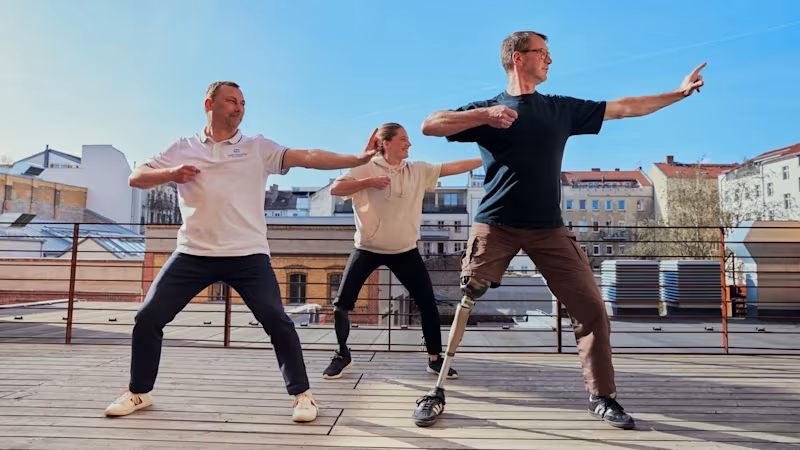


Fitness for Sport and Leisure
Fitness for sport & leisure
Being physically active is easier than you think, especially if you make activity part of your daily routine.
For most of us, except older adults, daily chores such as shopping or housework don't count towards your activity target. This is because your body doesn't work hard enough to get your heart rate up.
When it comes to exercise, people with disabilities have pretty much the same options as able-bodied people – everything from simply getting out a bit more to playing team sports. Once you start looking, you’ll be surprised how much is out there.
Running is an effective and straightforward way of exercising. As is Cycling; there are tricycles, quadcycles, recumbants, hand-powered bikes called handcycles and power-assisted bicycles, all of which are alternatives for those unable to ride a regular bicycle.
Swimming can feel quite liberating if you have a physical disability, as your body is mostly supported by the water. Many pools offer classes and sessions catering specifically for disabled people.
Involve friends and family to make activities more fun, sociable and enjoyable. Get outside with a friend and support and motivate each other, take the children swimming or join an exercise class.
Ottobock Sports: Tai Chi
Tai chi offers personal training that is equivalent to an energising, full-body workout to improve health and fitness. Training improves balance, physical control and motor activity as well as the ability to relax and concentrate, and lifts your inner mood. It's particularly suitable for people with movement disorders or limitations and is a perfect complement to conventional physical therapy.

Solutions

Sportsline - Running Prostheses
Ottobock’s sport prostheses for fitness and leisure make it possible to get up and get moving again.
Ottobock’s sport prostheses for fitness and leisure make it possible to get up and get moving again.
The only running prostheses designed and developed for below & above-knee amputees, both child and adult, our prosthetic solutions can help you increase strength and mobility while enhancing your overall health and well-being. And, if you’re an athlete in training, the 1E90 sprinter is the prosthesis you need.

ProCarve Snow and Water Sports Prosthesis
The Ottobock ProCarve snow & water sports prosthesis provides targeted support for ambitious athletes in their individual alpine winter sports. Designed especially for skiing, this high-activity sports prosthesis has integrated, high-performance dampers that control the flexion and extension movements for users with an above- or below-knee amputation. ProCarve is also suitable for other sports, such as wakeboarding, snowboarding and water-skiing.
The Ottobock ProCarve snow & water sports prosthesis provides targeted support for ambitious athletes in their individual alpine winter sports. Designed especially for skiing, this high-activity sports prosthesis has integrated, high-performance dampers that control the flexion and extension movements for users with an above- or below-knee amputation. ProCarve is also suitable for other sports, such as wakeboarding, snowboarding and water-skiing.
2 results out of 2